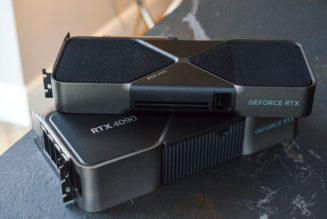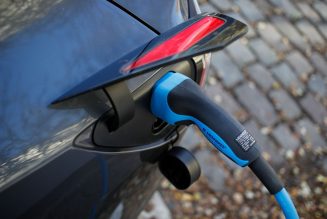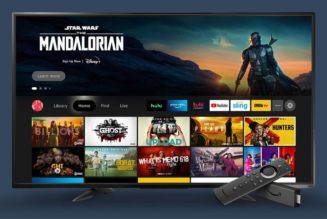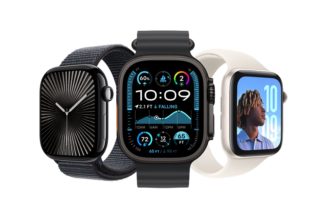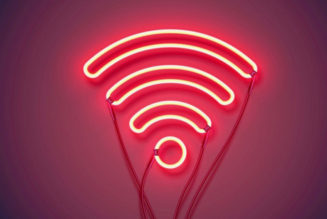There are three things I want from a smart lock: an attractive design, more than two ways to control it, and the ability to connect directly with my smart home, with no single-purpose Wi-Fi bridge taking up an outlet in my house. Yale’s newest smart lock series, the Yale Assure Lock 2, ticks all those boxes. Plus, it works with all the major smart home platforms if you add the right networking module — and it can support Matter, whenever that finally arrives. (Soon, people. Soon).
The Yale Assure Lock 2 starts at $159.99 for a physical keypad or $179.99 for a touchscreen, and you can get either version with or without a physical keyhole for the same price. The base models all have Bluetooth built in and can unlock with the keypad, via Bluetooth with the Yale app on a phone or Apple Watch, and with Apple Home (including Siri voice commands).
All the locks also work with Yale’s auto-unlock feature, which uses your phone’s location and the lock’s Bluetooth radio to unlock the door when you approach. It’s pretty magical when it works, though I’d rather have a fingerprint reader.
a]:shadow-highlight-franklin”>How we rate and review products
Like its earlier smart locks, Yale’s Assure 2 Lock uses networking modules to add different connectivity options. The difference now is, instead of a confusing lineup of connectivity options, there are just three: Wi-Fi (to connect to Amazon Alexa, Google Home and others), Z-Wave (for Ring Alarm, Samsung SmartThings and other Z-Wave systems), and Matter over Thread (coming soon) to connect to all of the above (hopefully). There’s also (finally!) no need for a separate Wi-Fi bridge.
I tested the $259.99 Assure Lock 2 Key-Free Touchscreen with Wi-Fi, which comes with the Wi-Fi module included and adds out-of-home control through the Yale app as well as Google Home and Amazon Alexa integration (SmartThings Wi-Fi integration is coming soon). Otherwise, it’s the exact same lock as the Bluetooth version. In fact, if you get the Bluetooth base model, you can buy the Wi-Fi module later for $80.
a:hover]:shadow-highlight-franklin [&>a]:shadow-underline-black dark:[&>a:hover]:shadow-highlight-franklin dark:[&>a]:shadow-underline-white md:text-26″>It’s discreet. Maybe a little too discreet?
%2Fcdn.vox-cdn.com%2Fuploads%2Fchorus_asset%2Ffile%2F24037391%2F226281_YALE_ASSURE_SMART_LOCK_2_jtuohy_0010.jpg&w=2400&q=75)
The Yale Assure Lock 2 is the most discreet-looking keypad lock I’ve tested. From a distance, the matte touchscreen is barely noticeable against my dark front door, which was not the case for the hulking Eufy smart lock I had installed previously.
Even better, the rear housing is significantly smaller than the earlier Yale Assure models and much smaller than most other deadbolt smart locks I’ve tested. It’s still not a look I love, but it’s less of an eyesore.
While the keypad-only models haven’t changed dramatically from the original Assure SL line, the keyed models have a completely new look, bringing them in line with the sleeker stylings of the keypad-only models.
Now, the difference is just that the keyed model is slightly larger to make room for the keyhole. But, unless you have a specific reason for needing a physical key, this is largely a waste of space that (ahem) could have gone to a fingerprint reader.
I can’t remember when I last used a physical key to get into my home
If you do opt for the keyed model, Yale sells replacement cylinders for Schlage and Kwikset keyways and can key them to your existing locks — though if you have multiple exterior doors, you don’t really need a keyhole on the one with the smart lock, do you?
I’ve been testing smart door locks for over a decade, and I can’t remember when I last used a physical key to get into my home. My teenage children have never used one, as I found out with some embarrassment when I dropped my son off at a college dorm for summer camp.
The only scenario I can think of — beyond some catastrophic mechanical failure — is if I managed to let the lock run out of battery. Even then, the key-free version enables you to jolt it back to life with a 9-volt battery long enough to input your code.
While keeping a 9-volt battery on hand feels weirder than sticking a spare key under a flower pot, it’s definitely more secure, and 9-volt batteries are easy to get ahold of in a pinch.
%2Fcdn.vox-cdn.com%2Fuploads%2Fchorus_asset%2Ffile%2F24037388%2F226281_YALE_ASSURE_SMART_LOCK_2_jtuohy_0007.jpg&w=2400&q=75)
%2Fcdn.vox-cdn.com%2Fuploads%2Fchorus_asset%2Ffile%2F24037389%2F226281_YALE_ASSURE_SMART_LOCK_2_jtuohy_0008.jpg&w=2400&q=75)
The matte keypad on the touchscreen model is so unobtrusive that it’s kind of a surprise when the keys light up. The downside is that it doesn’t light up with just a touch. I discovered this at 6:30AM when I was rudely awoken by a loud banging on the door.
My husband was back from work, and I hadn’t yet trained him on the new lock. In his post-24-hour-shift exhaustion, he couldn’t figure out how to get the keypad to show up.
As I should have told him earlier, he had to either press the Yale button (which I’m not a fan of; I don’t like branding on my front door) or put his whole palm over the lock to get the keypad to show.
This is how the earlier Assure locks work, too, and it’s an unnecessary extra step. Just let me tap the screen. If this is an issue for you, go for the standard keypad version, which has physical buttons. It’s less discreet but easier for everyone to use.
Once we got the hang of the keypad, though, unlocking was easy and reliable. Not as quick as a fingerprint reader, but fast enough. As mentioned, the auto-unlock feature is my preferred method when there isn’t a tap-to-unlock option (there’s no Apple Home Key, unfortunately).
I’ve used auto-unlock on August locks (August and Yale are sister companies and the locks share the same apps), and while I love it in theory, it isn’t as smooth as I’d like.
When auto-unlock works quickly enough, it’s quite magical, unlocking a few seconds before you get to the door. But when it doesn’t — about two times out of 10, in my experience — you end up standing in front of your door like a doofus for a few seconds waiting for it.
%2Fcdn.vox-cdn.com%2Fuploads%2Fchorus_asset%2Ffile%2F24037384%2F226281_YALE_ASSURE_SMART_LOCK_2_jtuohy_0003.jpg&w=2400&q=75)
%2Fcdn.vox-cdn.com%2Fuploads%2Fchorus_asset%2Ffile%2F24037386%2F226281_YALE_ASSURE_SMART_LOCK_2_jtuohy_0005.jpg&w=2400&q=75)
The Yale Access app is also pretty smooth. It’s well laid out and has all the features I look for. I can lock and unlock the door in Bluetooth range or remotely using Wi-Fi (with the Wi-Fi module installed).
I can see if the door is open or closed in the app (the lock comes with a magnetic sensor you put on the door frame) and view a log of every interaction with the door.
That log includes who opened it and how — manually, remotely with the app, with a code, or using a smart home platform like Apple Home — and I can set up smart alerts to tell me when these things happen.
I can add guests to the lock and allow full app access or just give them a code and schedule the time they can use it. There’s no limit to the number of codes, and I can revoke them anytime.
While it’s great to see a lock with Wi-Fi built in, I don’t think it’s the version most people should get
The built-in Apple Home integration means I can add the lock to a Goodnight Scene or a Leaving or Arriving Automation. Leaving will lock the door (the Yale app also lets you set an auto-lock for any period), and Arriving can unlock the door. Although, unlike Yale’s auto-unlock feature, I have to tap a prompt on my iPhone or Apple Watch for the automation to run.
a:hover]:shadow-highlight-franklin [&>a]:shadow-underline-black dark:[&>a:hover]:shadow-highlight-franklin dark:[&>a]:shadow-underline-white md:text-26″>The Wi-Fi module means no more bridges, but…
Aside from being able to lock and unlock the door when you’re away from home, everything I’ve discussed so far pertains to the Bluetooth base model, with no extra networking modules.
The lock I tested had the Wi-Fi module installed, and while it’s great to see a lock with Wi-Fi built in, I don’t think it’s the version most people should get.
%2Fcdn.vox-cdn.com%2Fuploads%2Fchorus_asset%2Ffile%2F24037385%2F226281_YALE_ASSURE_SMART_LOCK_2_jtuohy_0004.jpg&w=2400&q=75)
The Wi-Fi module adds out-of-home control with the Yale app, as well as integration with more smart home platforms. The out-of-home control worked well in the app, but both Google Home and Alexa integrations didn’t work in my testing.
I could add the locks to the platforms and add them to Routines, but when I tried to control them — through the Alexa and Google Home app or with their voice assistants — the action timed out.
This is likely some sort of connectivity issue; Garrett Lovejoy, VP of product management at Yale, says they’re working on a fix, and an update should be available next week. I’ll update this review if I see an improvement.
Another downside of integrated Wi-Fi is poor battery life. I’ve only had the Yale installed for a week but based on my testing of Wi-Fi locks in general, the 4 AA batteries the Yale runs on should get around six months. Changing your lock batteries twice a year is more tiresome than it sounds.
%2Fcdn.vox-cdn.com%2Fuploads%2Fchorus_asset%2Ffile%2F24037392%2F226281_YALE_ASSURE_SMART_LOCK_2_jtuohy_0011.jpg&w=2400&q=75)
a:hover]:shadow-highlight-franklin [&>a]:shadow-underline-black dark:[&>a:hover]:shadow-highlight-franklin dark:[&>a]:shadow-underline-white md:text-26″>Wait for the Matter module
The Assure 2 is a solid smart lock. Its design will fit in with most homes, it promises broad compatibility (although there are some bugs to work out with Alexa and Google), and it provides several easy and reliable ways to access your door while ditching your keys.
At $260, the Wi-Fi version of the Assure 2 is expensive, although slightly cheaper than the previous Assure SL. But you might not need the Wi-Fi version.
The $160 to $180 Bluetooth model (keypad or touchscreen), in contrast, is a real bargain: it’s the least expensive smart lock that works with Apple Home, you get out-of-home control if you already have an iPhone and Apple Home hub, and it’s upgradeable if you decided you wanted to add Wi-Fi later.
If you are all-in on Alexa or Google Home, I don’t recommend getting the Wi-Fi version yet. Wait until they get the bugs worked out with the smart home integrations, or even better, wait for the Matter over Thread module, which Lovejoy says will arrive soon after Matter is ready for manufacturers later this year.
The new smart home standard should support connecting the lock to all the same platforms the Wi-Fi module does, with less latency and better battery life. Plus, it also adds Wi-Fi connectivity. I will test it when it’s available and update this review.
%2Fcdn.vox-cdn.com%2Fuploads%2Fchorus_asset%2Ffile%2F24049787%2F8A0A6592.jpeg&w=2400&q=75)
The Matter module, like the Wi-Fi and Z-Wave modules, can be bought separately, so there’s no price penalty for buying the Bluetooth version now and adding a module later, but if you don’t use Apple Home, you won’t be able to control the lock when you’re not at home.
Bear in mind you will also need a Thread border router for the Matter version. As this can be anything from a Google Nest Hub Max to an Echo 4th gen smart speaker to an Eero Wi-Fi router and more, hopefully it won’t involve a separate purchase.
It’s a shame Yale couldn’t have just built Thread right into the device and effectively done away with the need for modules at all. But Lovejoy told me they were too far along in the development process to wait on Matter.
Yale isn’t the first smart home company to be put in an awkward spot by Matter delays — some, like Nanoleaf, shipped Thread devices they assumed would work with Matter, only to be left in the cold as hardware requirements changed.
Yale’s modular approach to connectivity — which dates back at least a decade to the Yale Real Living deadbolt — is a great asset here since it means the company can ship the lock without waiting for a final Matter spec. And all of the Assure 2 modules will be backward-compatible with Yale’s older Assure locks. That’s clever and user-friendly, and more companies should follow Yale’s lead.
Photography by Jennifer Pattison Tuohy / The Verge
a:hover]:shadow-highlight-franklin [&>a]:shadow-underline-black dark:[&>a:hover]:shadow-highlight-franklin dark:[&>a]:shadow-underline-white md:text-30″>Agree to continue: Yale Assure Lock 2
Every smart device now requires you to agree to a series of terms and conditions before you can use it — contracts that no one actually reads. It’s impossible for us to read and analyze every single one of these agreements. But we started counting exactly how many times you have to hit “agree” to use devices when we review them since these are agreements most people don’t read and definitely can’t negotiate.
To set up the Yale Assure Lock 2, you must download and install the Yale Access app (iOS and Android) and create an account. By doing so, you need to agree to the following:
The smart lock can also be paired to Apple Home, but not directly; you need to set it up in Yale Access app first
Finally tally: three mandatory agreements.

